Technology
Atlassian today announced a set of new templates and workflows for Jira Service Desk that were purpose-built for HR, legal and facilities teams. Service Desk started six years ago as a version of Jira that was mostly meant for IT departments. Atlassian, however, found that other teams inside the companies that adopted it started to use it as well, including various teams at Twitter and Airbnb, for example. With todayupdate, itnow making it easier for these teams, at least in legal, HR and facilities, to get started with Jira Service Desk without having to customize the product themselves.
&Over the last six years, one of the observations that we&ve made was that we need to provide really good services — the idea that we can provide great services to employees is really something that is really on the rise,& said Edwin Wong, the head of the companyIT products. &I think in the past, maybe we were a bit more forgiving in terms of what employees expected from services departments. But today you&re just so used to great experiences in your consumer life and when you come to work, you expect the same.&
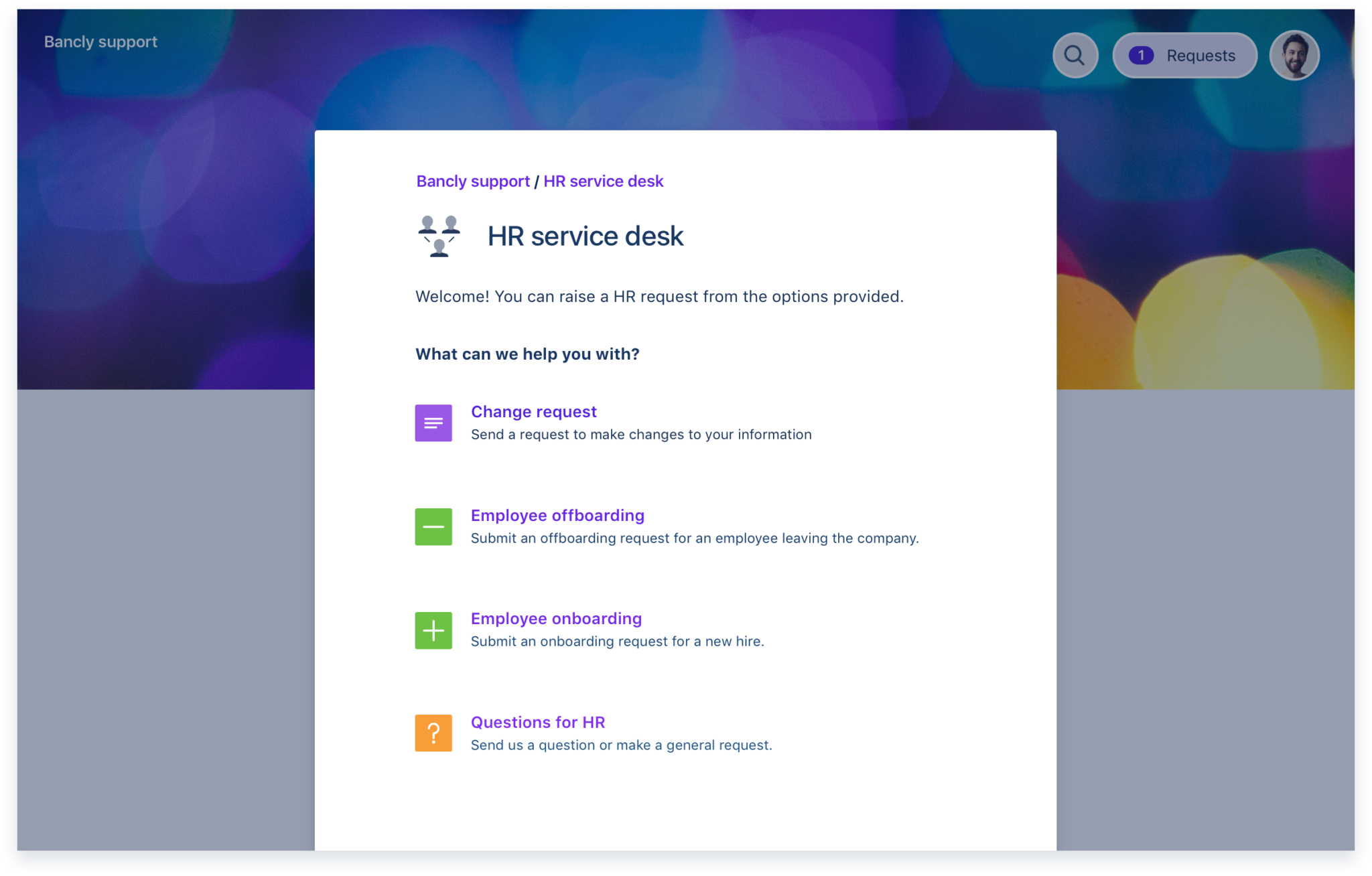
But lots of service teams, he argues, didn&t have the tools to provide this experience, yet they were looking for tools to streamline their workflows (think onboarding for HR teams, for example) and to move from manual processes to something more automated and modern. Jira was already flexible enough to allow them to do this, but the new set of templates now codifies these processes for them.
Wong stressed this isn&t just about tracking but also managing work across teams and providing them a more centralized hub for information. &One of the big challenges that we&ve seen from many of the customers that we&ve spoken to is the challenge of just figuring out where to go when you want something,& he said. &When I have a new employee, where do I go to ask for a new laptop? Is that the same process as telling my facilities teams that perhaps there is an issue with a bathroom?&
Atlassian is starting with these three templates because thatwhere it saw the most immediate need. Over time, I&m sure we&ll see the company get into other verticals as well.
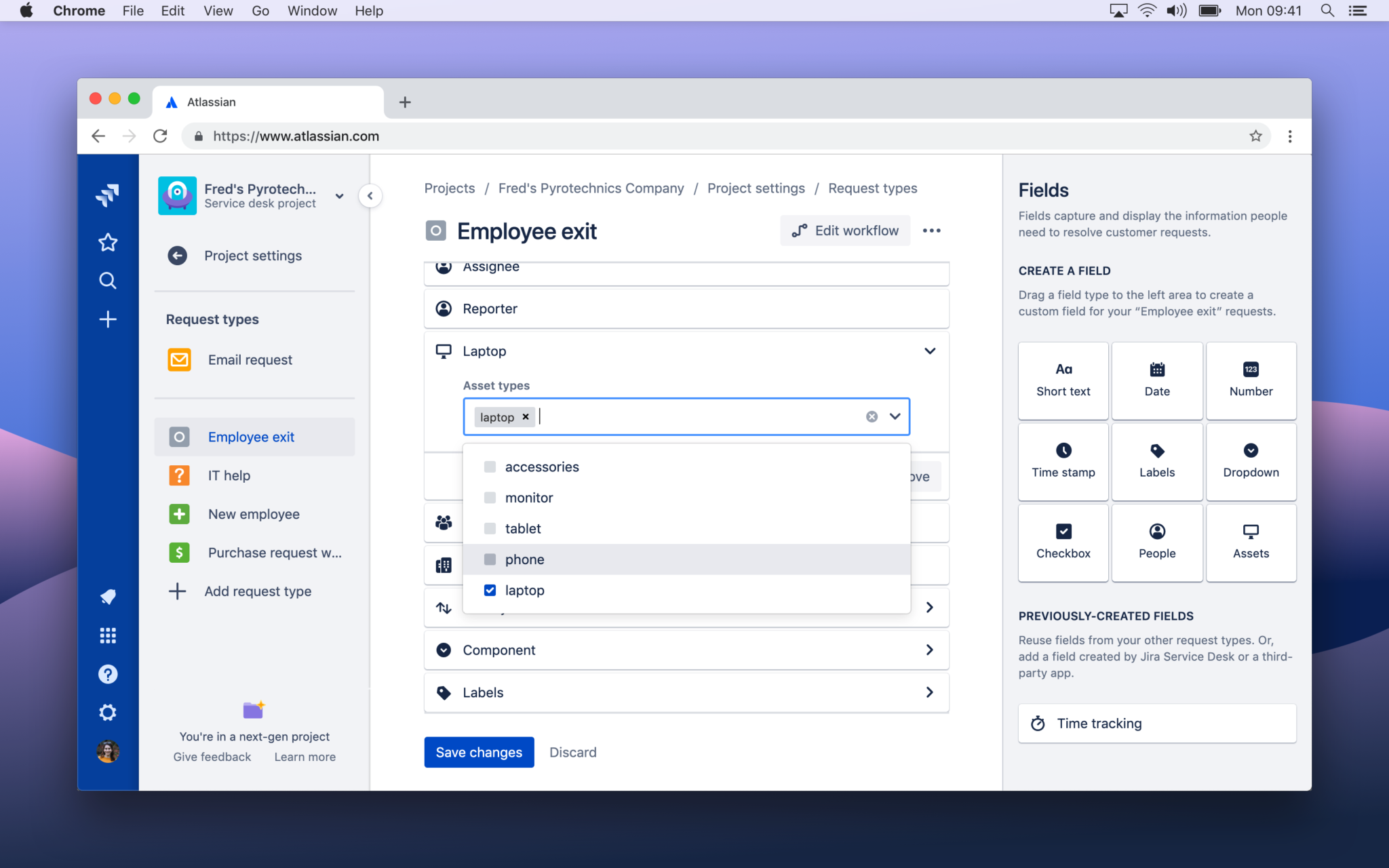
- Details
- Category: Technology
Read more: Atlassian expands Jira Service Desk beyond IT teams
Write comment (92 Comments)Funding of artificial intelligence-focused companies reached approximately $9.3 billion in the U.S. in 2018, an amount that will continue to rise as the transformative impact of AI is realized. That said, not every AI startup has what it takes to secure an investment and scale to success.
So, what do venture capitalists look for when considering an investment in an AI company?
What we look for in all startups
Some fundamentals are important in any of our investments, AI or otherwise. First, entrepreneurs need to articulate that they are solving a large and important problem. It may sound strange, but finding the right problem can be more difficult than finding the right solution. Entrepreneurs need to demonstrate that customers will be willing to switch from what they&re currently using and pay for the new solution.
The team must demonstrate their competence in the domain, their functional skills and above all, their persistence and commitment. The best ideas likely won&t succeed if the team isn&t able to execute. Setting and achieving realistic milestones is a good way to keep operators and investors aligned. Successful entrepreneurs need to show why their solution offers superior value to competitors in the market — or, in the minority of cases where there is an unresolved need — why they&re in the best position to solve it.
In addition, the team must clearly explain how their technology works, how it differs and is advantageous relative to existing competitors and must explain to investors how that competitive advantage can be sustained.
For AI entrepreneurs, there are additional factors that must be addressed. Why? It is fairly clear that we&re in the early stages of this burgeoning industry which stands to revolutionize sectors from healthcare to fintech, logistics to transportation and beyond. Standards have not been settled, there is a shortage of personnel, large companies are still struggling with deployment, and much of the talent is concentrated in a few large companies and academic institutions. In addition, there are regulatory challenges that are complex and growing due to the nature of the technologyevolutionary aspect.
Here are five things we like to see AI entrepreneurs demonstrate before making an investment:
Demonstrate mastery over their data and its value: AI needs big data to succeed. There are two models: companies can either help customers add value to their data or build a data business using AI. In either case, startups must demonstrate that the data is reliable, secure and compliant with all regulatory rules. They must also demonstrate that AI is adding value to their own data — it must explain something, derive an explanation, identify important trends, optimize or otherwise deliver value.
With the sheer abundance of data available for companies to collect today, itimperative that startups have an agile infrastructure in place that allows them to store, access and analyze this data efficiently. A data-driven startup must become ever more responsive, proactive and consistent over time.
AI entrepreneurs should know that while machine learning can be applied to many problems, it may not always yield accurate predictions in every situation. Models may fail for a variety of reasons, one of which is inadequate, inconsistent or variable data. Successful mastery of the data demonstrates to customers that the data stream is robust, consistent and that the model can adapt if the data sources change.
Entrepreneurs can better address their customer needs if they can demonstrate a fast, efficient way to normalize and label the data using meta tagging and other techniques.
Remember that transparency is a virtue: There is an increased need in certain industries — such as financial services — to explain to regulators how the sausage is made, so to speak. As a result, entrepreneurs must be able to demonstrate explainability to show how the model arrived at the result (for example, a credit score). This brings us to an additional issue about accounting for bias in models and, here again, the entrepreneur must show the ability to detect and correct bias as soon as they are found.
- Details
- Category: Technology
Read more: What AI startups need to achieve before VCs will invest
Write comment (93 Comments)
Rocket launch startup Rocket Lab is all about building out rapid-response space-launch capabilities, and founder/CEO Peter Beck is showing off its latest advancement in service of that goal: A room-sized manufacturing robot named &Rosie.&
Rosie is tasked with processing the carbon composite components of Rocket LabElectron launch vehicle. That translates to basically getting the rocket flight-ready, and therea lot involved in that — ita process that normally can take &hundreds of hours,& according to Beck. So how fast can Rosie manage the same task?
&We can produce one launch vehicle in this machine every 12 hours,& Beck says in the video. That includes &every bit of marking, every bit of machining, every bit of drilling,& he adds.
This key new automation tool essentially takes something that was highly bespoke and manual and turns it into something eminently repeatable and expedited, which is a necessary ingredient if Rocket Lab is ever to accomplish its goal of providing high-frequency launches to small satellite customers with very little turnaround time. The companyNew Zealand launch facility recently landed an FAA license that helps sketch out the extent of its ambition, as ittechnically cleared to launch rockets as often as every 72 hours.
In addition to innovations like Rosie, Rocket Lab uses 3D printing for components of its launch vehicle engines that result in single-day turnaround for production, versus weeks using more traditional methods. Italso now working on an ambitious plan for rocket recovery, which should help further with providing high-frequency launch capabilities as it&ll mean they don&t have to build entirely new launch vehicles for every mission.
- Details
- Category: Technology
Read more: Rocket Lab’s new ‘Rosie the Robot’ speeds up launch vehicle production — by a lot
Write comment (95 Comments)At its annual Universe conference today, Microsoft -owned GitHub announced a couple of new products, as well as the general availability of a number of tools that developers have been able to test for the last few months. The two announcements that developers will likely be most interested in are the launch of GitHubfirst native mobile app and an improved notifications experience. But in addition to that, it is also taking GitHub Actions, the companyworkflow automation and CI/CD solution, as well as GitHub Packages, out of beta. GitHub is also improving its code search, adding scheduled reminders and launching a pre-release program that will allow users to try out new features before they are ready for a wider rollout.
GitHub is also extending its sponsor program, which until now allowed you to tip individual open-source contributors for their work, to the project level. With GitHub Sponsors, anybody can help fund a project and the members of that project then get to choose how to use the money. These projects have to be open source and have a corporate or nonprofit entity attached to it (and a bank account).
&Developers are whatdriving us and we&re building the tools and the experiences to help them come together to create the worldmost important technologies and to do it on an open platform and ecosystem,& GitHub SVP of Product Shanku Niyogi told me. Todayannouncements, he said, are driven by the companymission to improve the developer experience. Over the course of the last year, the company launched well over 150 new features and enhancements, Niyogi stressed. For its Universe show, the company decided to highlight the new mobile app and notification enhancements, though.
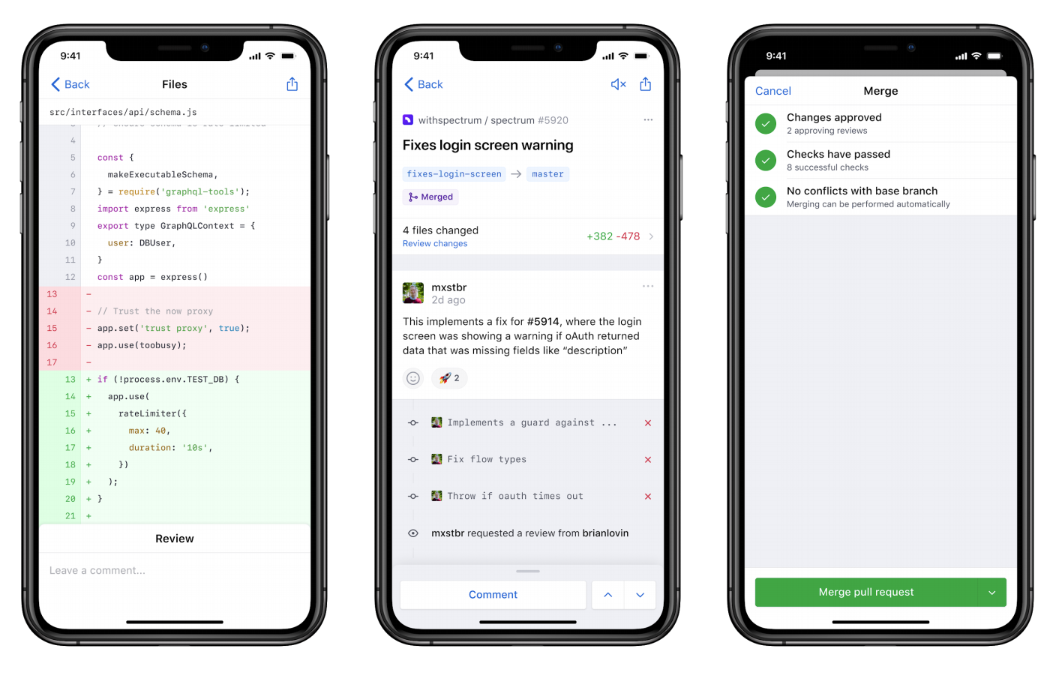
The new mobile app, which is now out in beta for iOS, with Android support coming soon, offers all of the basic features you&d want from a mobile app like this. The team decided to focus squarely on the kind of mobile use cases that would make the most sense for a developer on the go, so you&ll be able to share feedback on discussions, review a few lines of code and merge changes, but this isn&t meant to be a tool that replicated the full GitHub experience, though at least on the iPad, you do get a bit more screen real estate to work with.
&When you start to look at the tablet experience, that then extends out because you now got more space,& explained Niyogi. &You can look at the code, you can navigate some of that, we support some of the key same keyboard shortcuts that github.com does to be able to look at a larger amount of content and a larger amount of code. So, the idea is the experience scales with the mobile devices you have, and but italso designed for the things you&re likely to do when you&re not using your computer.&
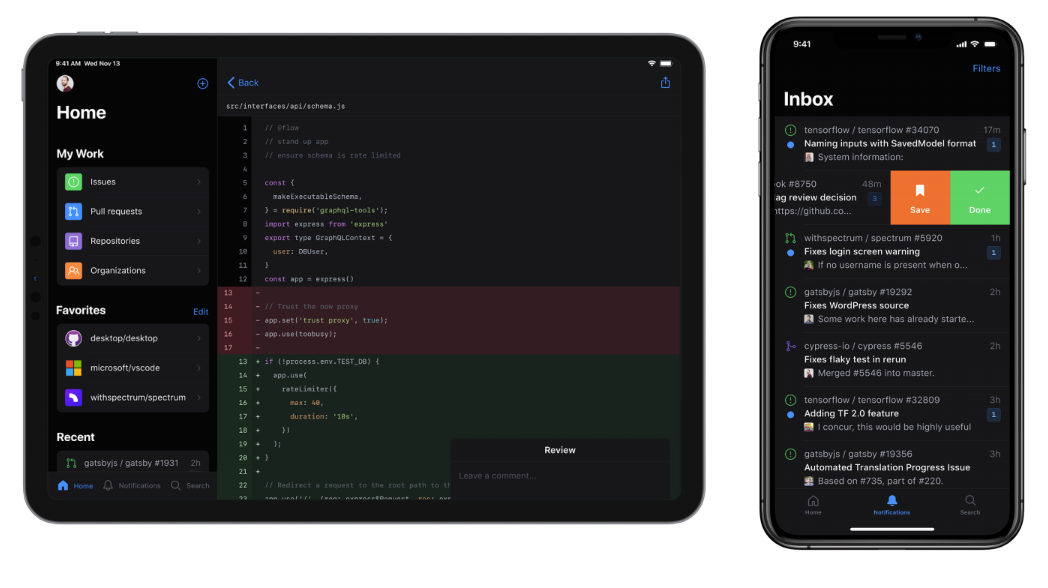 Others have built mobile apps for GitHub before, of course, and it turns out that the developers of GitHawk, which was launched by a group of engineers from Instagram, recently joined GitHub to help the company in its efforts to get this new app off the ground.
Others have built mobile apps for GitHub before, of course, and it turns out that the developers of GitHawk, which was launched by a group of engineers from Instagram, recently joined GitHub to help the company in its efforts to get this new app off the ground.
The second major new feature is the improved notifications experience. As every GitHub user on even a medium-sized team knows, GitHubcurrent set of notifications can quickly become overwhelming. Thatsomething the GitHub team was also keenly aware of, so the company decided to build a vastly improved system that includes filters, as well as an inbox for all of your notifications right inside of GitHub.
&The experience for developers today can result in an inbox in Gmail or whatever email client you use with tons and tons of notifications — and it can end up being kind of hard to know what matters and whatjust noise,& Kelly Stirman, GitHub& VP of Strategy and Product Management, said. &We&ve done a bunch of things over the last year to make notifications better, but what we&ve done is a big step. We&ve reimagined what notifications should be.&
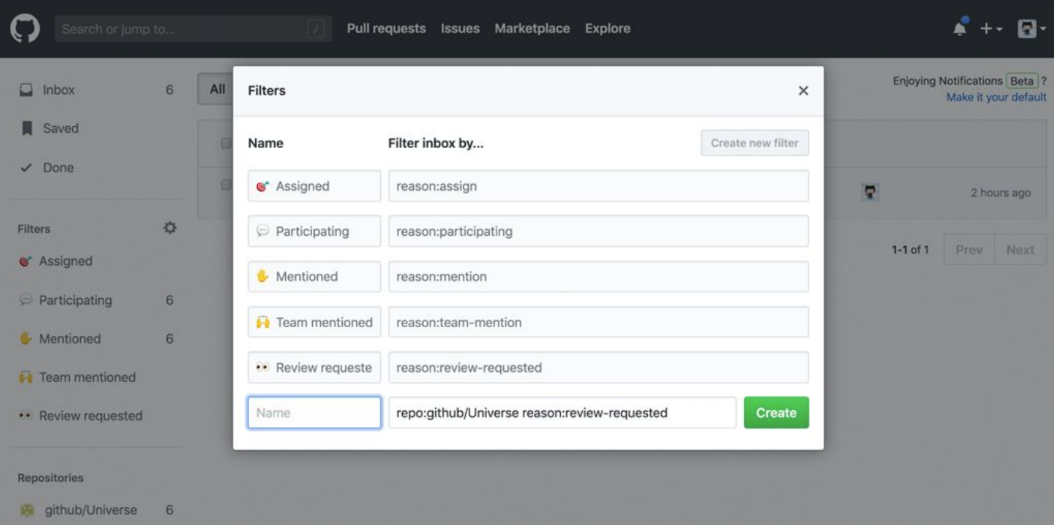
Using filters and rules, developers can zero in on the notifications that matter to them, all without flooding your inbox with unnecessary noise. Developers can customize these filters to their hearts& content. Thatalso where the new mobile experience fits in well. &Many times, the notification will be sent to you when you&re not at your computer, when you&re not at your desktop,& noted Stirman. &And that notification might be somebody asking for your help to unblock something. And so itnatural we think that we need to extend the GitHub experience beyond the desktop to a mobile experience.&
Talking about notifications: GitHub also today announced a new feature in a limited preview that adds a few more notifications to your inbox. You can now set up scheduled reminders for pending code reviews.
Among the rest of todayannouncements, the improved code search stands out because thatdefinitely an area where some improvements were necessary. This new code search is currently in limited beta, but should roll out to all users over the next few months. It&ll introduce a completely new search experience, the company says, that can match special characters and casing, among other things.
Also new are code review assignments, now in public beta, and a new way to navigate code on GitHub.
- Details
- Category: Technology
Read more: GitHub launches a mobile app, smarter notifications and improved code search
Write comment (92 Comments)
Volkswagen said Wednesday it will build a battery pack assembly facility as part of an $800 million expansion project that will turn the Chattanooga, Tenn. factory into its North American base for manufacturing electric vehicles.
The Chattanooga factory expansion, which includes a 564,000-square-foot addition to the body shop and is expected to create 1,000 new jobs at the plant, has been in the works for some time now. But the battery pack assembly announcement, while logical, came as a surprise.
&This is a big, big moment for this company,& Scott Keogh, president and CEO of Volkswagen Group of America said in a statement. &Expanding local production sets the foundation for our sustainable growth in the U.S. Electric vehicles are the future of mobility and Volkswagen will build them for millions of people.&
The automakerChattanooga expansion is just a piece of its broader plan to move away from diesel in the wake of the emissions cheating scandal that erupted in 2015. Globally, VW Group plans to commit almost $50 billion through 2023 toward the development and production of electric vehicles and digital services.
The Tennessee factory (along with the other new facilities) will produce electric vehicles using Volkswagenmodular electric toolkit chassis, or MEB, introduced by the company in 2016. The MEB is a flexible modular system — really a matrix of common parts — for producing electric vehicles that VW says makes it more efficient and cost-effective.
The company also built a European facility in Zwickau, Germany. Earlier this month, VW began production of the ID. 3 electric vehicle began at the Zwickau factory. By 2022, VWMEB vehicles will be produced at eight locations on three continents.
EV-production at facilities are expected to come online in Anting and Foshan in China in 2020, and in the German cities of Emden and Hanover by 2022.
Volkswagen currently produces the midsize Atlas SUV and the Passat sedan at the Chattanooga factory. Production of its electric vehicles is set to begin in Chattanooga in 2022. The first model will be an SUV of the ID. family.
- Details
- Category: Technology
Read more: Volkswagen’s $800M Tennessee factory expansion to include battery pack plant
Write comment (92 Comments)

The new foldable Moto Razr might indeed be coming to India, as hinted earlier by the teasers on social media and now, a registration link on Motorola’s website.
The original Moto Razr was one of the most iconic flip phones of all time. To honor that caliber, Motorola brought back its namesake but as a fancy foldable this time. With a tall,
- Details
- Category: Technology
Read more: Motorola India website teases Razr 2019 asking users to register interest
Write comment (96 Comments)Page 362 of 5614

 14
14